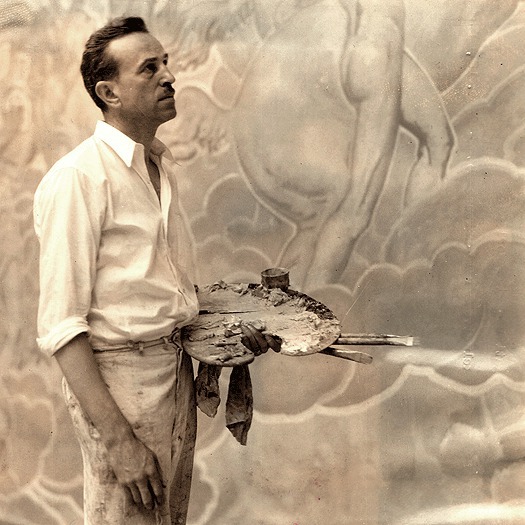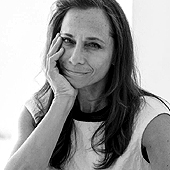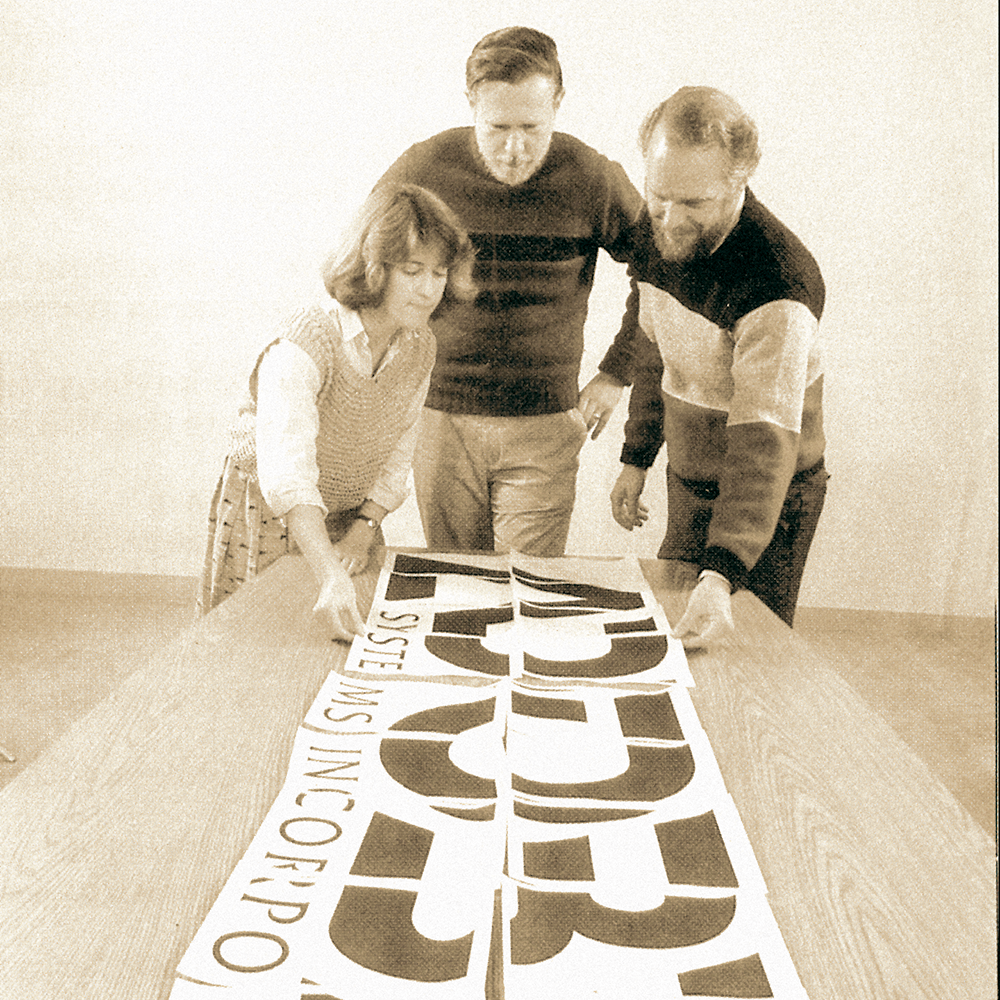
Jessica Helfand|Essays, The Ezra Winter Project
September 27, 2016
Ezra Winter Project: Chapter One

Ezra Winter working on the Rockefeller Center murals, circa 1932
The Ezra Winter Project
Prologue
What follows is an experiment in visual biography.
For the next twelve months, I will post a chapter each month in an ongoing project which, while comprised of pictures and words, I am reluctant to call a book.
Though biographical in nature and likely to be organized, from time to time, in a narrative form that befits a classic biography, there is nothing classic about this story. It will not be delivered in sequence, and the conclusions it draws are unlikely to relate to chronological discovery, either my subject’s or my own.
While it is based on — and to a large degree, tethered to— true events, there may be interpretive choices that lend it, from time to time, a sense of the fictional. Likewise, there may be seemingly incongruous tangents that present as narratives of their own, yet which connect rather critically to the main action. There will be media — included, but not limited to photographs and ephemera, film clips and sound bytes, ancillary bits and pieces intended to circumscribe and by conjecture, illuminate the broader experience of such an unusual story. Finally, while my subject arguably warrants careful examination within the context of art history, this too will be incidental: where the work itself is concerned, I will include examples where relevant, with links to further reference as appropriate.
This is the story about a person, not about the work he produced. It is the tale of one man’s life of stunning focus, a half-century of unwavering determination made all the more astonishing because it coincided with an era of immense artistic turbulence. From Fauvism to Futurism, through the jazz age and into the machine age, this man bore witness. Yet through it all — in spite of it all — his own perspective remained firmly planted in the previous century.
What follows is a story of one man’s magnificent odyssey. A farmer by birth and an engineer by training, he was, first and foremost, a painter. But he was also a dreamer, and an actor. A traveler, and a teacher. A player. A lover. And tragically, in the end — a martyr.
He was also quite possibly the most famous artist you’ve never heard of.
And his name was Ezra Winter.

Ezra Winter, in his Connecticut studio, circa 1948
The Ezra Winter Project
Chapter One: Shotgun
On April 7, 1949, shortly before one o’clock in the afternoon, Ezra Winter walked out into the woods behind his Connecticut studio, pointed a double-barreled shotgun at his left temple, and fired. He was 63 years old.
He left no note.
Winter’s story is at once a parable and a paradox, perfectly played out on the cusp of the modern age. He rose as if from nowhere, a farm boy from rural Michigan — self-taught, fiercely driven, tall and handsome and unequivocally ambitious. He married, started a family and won the Prix de Rome just before the First World War, and spent the next half-decade immersing himself in the bounty of European grandeur. Following his fellowship at the American Academy in Rome, Winter toured Greece, where he steeped himself in the antiquity that would, both conceptually and formally, come to influence his work for years to come.
But the arc of his career would prove inversely proportionate to the evolution of a fiercely new America: as the nation grew more modern so, too, did Winter more firmly inhabit an inert, if classical world. As the practice of modern building became more streamlined, Winter’s deference to classical architecture intensified. And as the ideals of a new democracy beckoned, Winter’s regal panoramas further cemented his imperialist leanings. He believed in — and painted with — a kind of majestic sense of nobility, a hopeful, if arcane sort of wonder in the mystical power of visual optimism.
Such optimism was at odds with the harsher realities of life in America both during and between the wars, and on some very basic level, Winter knew it: indeed, his personal life was perhaps equally challenged by paradox. Divorced by his first wife on the grounds of cruelty and abandonment, he remained a loving and devoted parent to his three daughters, and a generous son to his ailing Mother. Plagued by enduring financial worries, he nevertheless managed, at the height of the Depression, to travel, entertain, and even purchase a somewhat rare Marmon convertible. And when it came time to find a new studio, Winter — by now a dyed-in-the-wool, classically-minded urbanite — built himself a decidedly stark, Bauhaus box on a rural mountaintop in New England.
Such fundamental tensions would come to frame Winter’s life both in and out of the studio, offering a critical framework within which to reconsider his legacy, a legacy which has everything — and for that matter, nothing — to do with his actual painting.
Observed
View all
Observed
By Jessica Helfand

 Jessica Helfand, a founding editor of Design Observer, is an award-winning graphic designer and writer and a former contributing editor and columnist for Print, Communications Arts and Eye magazines. A member of the Alliance Graphique Internationale and a recent laureate of the Art Director’s Hall of Fame, Helfand received her B.A. and her M.F.A. from Yale University where she has taught since 1994.
Jessica Helfand, a founding editor of Design Observer, is an award-winning graphic designer and writer and a former contributing editor and columnist for Print, Communications Arts and Eye magazines. A member of the Alliance Graphique Internationale and a recent laureate of the Art Director’s Hall of Fame, Helfand received her B.A. and her M.F.A. from Yale University where she has taught since 1994.



